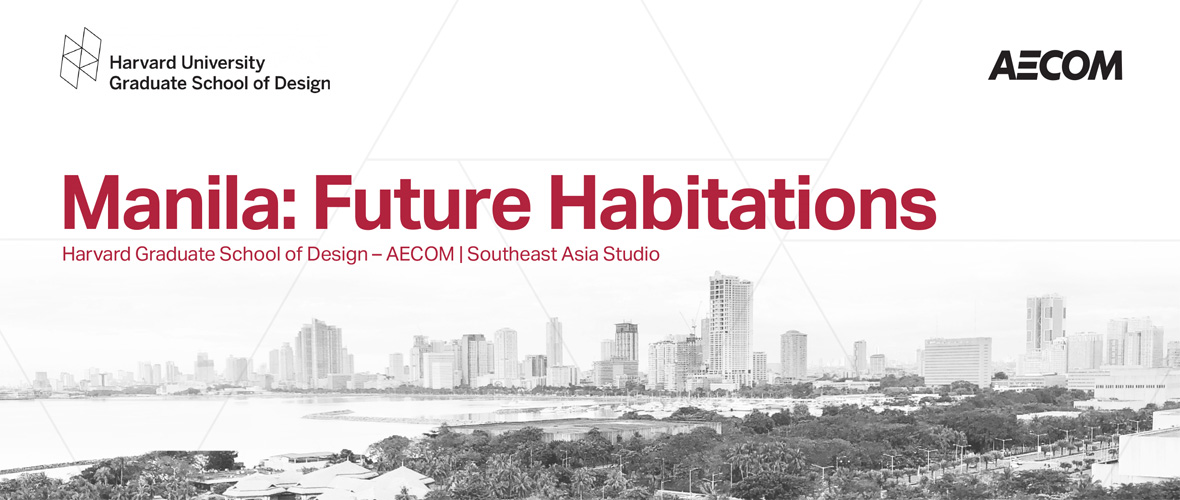Harvard University Graduate School of Design students are giving Manila a makeover through a design exercise to help historic Manila sites reconnect with the 21st century megacity of Greater Metro Manila.
The 3rd leg and final year of the Southeast Asia Design Studio series collaboration of Harvard and global infrastructure company AECOM brings the studio project to the megacity of Manila after their 2-year run in Jakarta and Kuala Lumpur.
The Manila Studio 2018 program theme “Manila: Future Habitations” will focus on three strategic areas within or adjacent to Manila’s historic core:
- the Port of Manila,
- the Baseco Compound,
- and the historic Intramuros and “Burnham Plan” monumental core and Adjacent Pasig Riverfront.
The 3 areas have been assessed by the project team as where infrastructure, architecture, and challenged ecologies are in need of alignment.
The Manila studio will focus on the design of human settlements, new types of dwellings, the connective tissue and common ground of cities, and the challenge of designing for the human condition against future tensions.
The design teams composed of 13 Harvard graduate students of design are challenged to find lasting solutions acceptable to Manila residents while uniting the city across a unified urban fabric.
Manila: Future Habitations sees that Manila’s extraordinary 500-year recorded history—written, erased, and rewritten—has rendered a current urbanized condition that is among the world’s most extreme, with great tensions.
“This mega-city of 25 million is ripe with poverty and affluence, congestion and release, pollution and ecological diversity.
Yet amidst these contradictions and extremes is a vibrant, dynamic human fabric with global aspirations and vast potential,” according to the project brief.

Mohsen Mostafavi, Dean of the Harvard Graduate School of Design and the Alexander and Victoria Wiley professor of design said in the project release, “Contemporary Greater Metro Manila, with a population of more than 25 million, is by far the largest city in our three-year series on Southeast Asia, and arguably the most complex, with vast extremes of economic and social strata, and yet universal challenges for its citizens, such as mobility, improved ecology and connectivity.”
“Manila’s fascinating history and unique characteristics have created an urban scenario among the most challenging, and yet promising, anywhere in the world. This makes for a truly fascinating and exciting study area,” he added.
“Manila’s challenges may seem substantial, but the most critical building blocks of opportunity are present in the form of a strong economy which has been among the world’s highest performing for close to a decade; and the yearning that citizens share for a better quality of urban life,” said Sean Chiao, AECOM’s President, Asia Pacific.
“We are truly moved by the passion that Manila residents have for their city; it will go far in carrying the Manila Studio 2018 over its six month journey.
As the Studio offers top students with the real and complex challenge of researching and developing new design concepts for Manila, diverse stakeholders across the city are able to discover new ways of approaching old challenges through the fresh perspective of the students,” said Chiao.
The Harvard students will explore Manila for 6 months and they will continue to converse with local residents as they re-imagine and redesign the city.